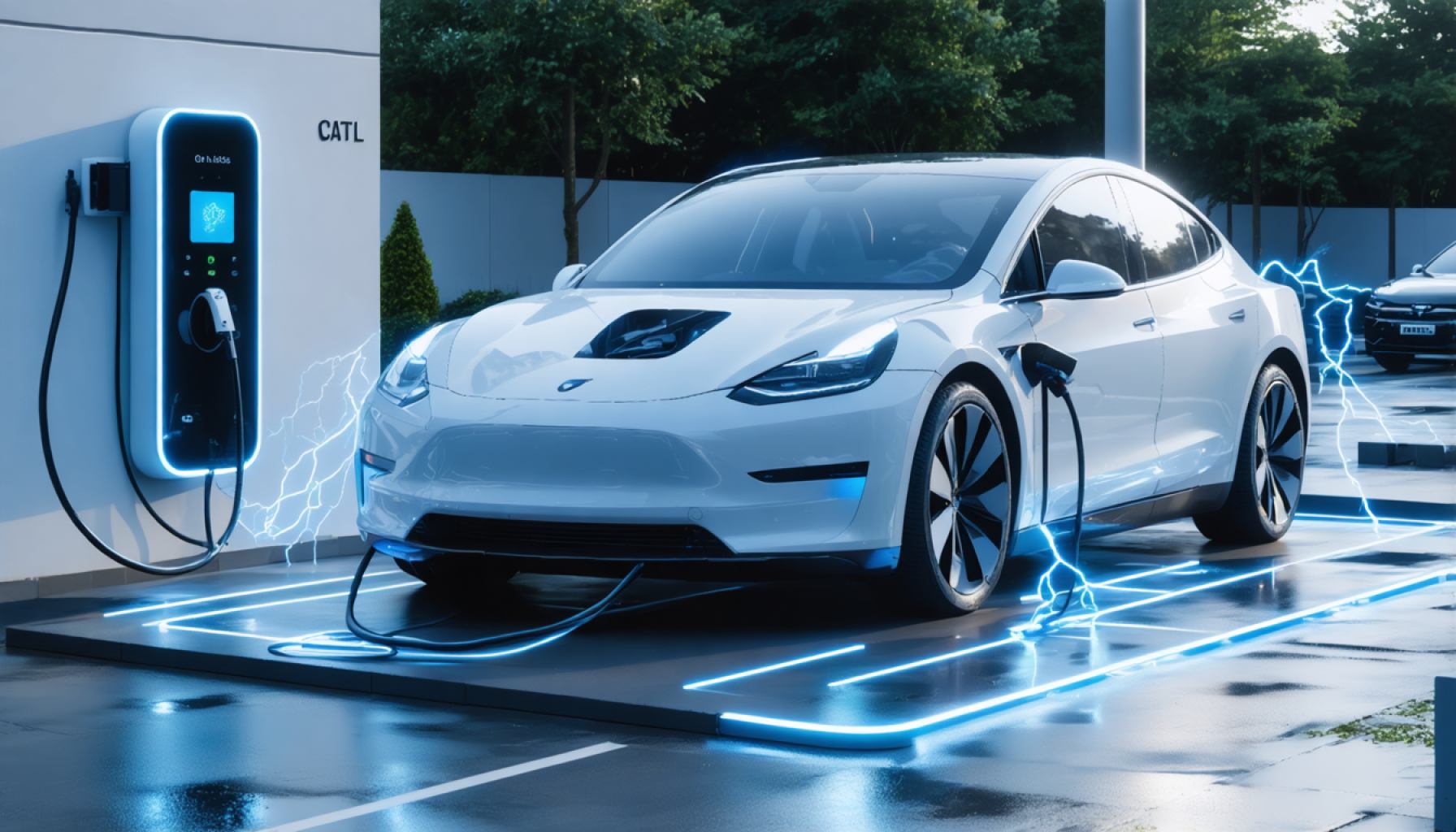
- CATL has introduced the Shenxing battery cell, enabling a rapid charge that adds 322 miles in minutes, signaling a breakthrough in electric vehicle charging times.
- The Shenxing battery allows electric vehicles to achieve a full charge of 500 miles and a peak charging speed of 1.5 miles per second.
- This advancement challenges other manufacturers such as BYD Co, with over 67 new electric vehicle models set to incorporate this technology soon.
- CATL’s CTO, Gao Huan, unveiled Naxtra, a sodium-ion battery brand aimed at reducing dependence on lithium and providing more sustainable solutions.
- These innovations mark a step towards “energy freedom,” promoting sustainability and decreasing reliance on fossil fuels globally.
- CATL’s technological strides depict a future where electric vehicles are faster and more sustainable, steering the world towards an electrified transport era.
Beneath the canvas roof of innovation, a seismic shift is electrifying the roadways, propelling the future of transportation beyond the realm of gasoline and into the lightning domain of electric vehicles. China’s behemoth of battery innovation, CATL, has sent ripples through the industry with a technological leap that promises to obliterate long-standing charging time struggles. Imagine pushing 322 miles’ worth of energy into your car as you sip a quick brew—an exquisite reality now, thanks to CATL’s upgraded Shenxing battery cell.
This remarkable advancement debuted just as the Shanghai auto show illuminated the city’s skyline, casting a brighter spotlight on what’s now possible. The expanded capabilities of the Shenxing aren’t just about speed; it heralds a new era where an exhilarating 500 miles stretch out in a full charge, solidified by a breathtaking 1.5 miles per second peak charging velocity.
As electric vehicle manufacturers grapple for supremacy, CATL’s advance presents a formidable challenge to its peers, including BYD Co, which recently captured headlines with its own tantalizing progress. However, CATL’s latest stride seems poised to recalibrate industry standards entirely, holding the promise of over 67 new electric vehicle models embedding this technological marvel by the year’s turn.
The mastermind behind this battery metamorphosis, CTO Gao Huan, also unfolded an alluring narrative around Naxtra, CATL’s new sodium-ion battery brand. As tides rise towards sustainable yet economically feasible alternatives, sodium-ion emerges as a knight in shining armor. Its potential signifies not just a shift but a liberation from the bottleneck of lithium-dependence.
Picture the world moving towards “energy freedom,” a phrase Gao prominently chooses to characterize a future envisaged by battery engineers who dream beyond the horizon of rare critical minerals. It’s an invitation to a new journey—one where the wheel of fortune spins not on the axles of existing resources, but in the inspiration of scientific courage.
The race to charge mastery is relentless, but CATL’s innovation paints a vivid scene of speed, sustainability, and spontaneity. As the curtain rises on this new act in the global theater of technology, the key takeaway resonates loud and clear: these advancements aren’t just about faster vehicles, but a faster path to an electric world where reliance on fossil fuels finally fades in the rearview mirror.
How CATL’s Breakthrough Battery Technology Could Revolutionize Electric Vehicles
CATL’s Cutting-Edge Battery Technology: A Deeper Dive
China’s Contemporary Amperex Technology Co. Limited (CATL) has made waves in the electric vehicle (EV) industry with its groundbreaking Shenxing battery cell. Designed to drastically reduce EV charging times, this technology represents a pivotal shift toward enhancing the practicality and appeal of electric vehicles. Here, we delve into unexamined facets of this innovation, address key industry questions, and offer insights into the future of EVs.
How CATL’s Shenxing Battery Revolutionizes Charging
1. Increased Range and Speed: CATL’s Shenxing battery promises a notable peak charging speed of 1.5 miles per second, allowing vehicles to cover up to 500 miles on a full charge. This enhancement represents a substantial leap from current standards, potentially making EVs more viable for long-distance travel.
2. Broader Implications for EV Adoption: The rapid charging capabilities significantly address one of the primary objections against EV adoption—long charging times—which have often deterred potential buyers.
Sodium-Ion Batteries: A Sustainable Future
Real-World Use Cases
– Sustainable Alternatives: The launch of CATL’s Naxtra brand introduces sodium-ion batteries as a promising alternative to lithium-based models. Sodium-ion batteries are more abundant and less costly, reducing dependency on rare minerals and paving the way for more sustainable production.
Insights & Predictions
– Market Impact: The sodium-ion technology could lower battery costs significantly—potentially by 10-20%—making EVs more affordable and accelerating market penetration.
– Environmental Benefits: Using locally abundant sodium can mitigate lithium mining’s ecological impact, contributing to a more sustainable energy future.
Key Questions on the Horizon
– How Will CATL’s Technology Affect Other Manufacturers?: CATL’s advancements set a high bar, creating pressure for competitors like Tesla and BYD to innovate further or develop complementary technologies.
– What Are the Potential Challenges?: As with any emerging technology, scaling production while maintaining quality and managing costs will be crucial obstacles for CATL to overcome.
Recommendations and Practical Steps
1. For Consumers: Consider timing your EV purchase to coincide with the availability of new models equipped with these advanced batteries, likely making for a more efficient and value-rich investment.
2. For Investors: Keep an eye on CATL and related industry developments, as breakthroughs in battery technology indicate potential high returns.
3. For Policymakers: Support initiatives and incentive programs that encourage the adoption of cutting-edge EV technologies, aiding in the transition from fossil fuels to electric solutions.
Conclusion
CATL’s technological leap with the Shenxing battery cell is not just about making cars go faster; it’s about accelerating a global transition to sustainability and energy independence. As this new era unfolds, expect to see EVs become more central to the transportation landscape, driven by innovations that echo CATL’s commitment to energy freedom.
For further insights on battery technology advancements and other automotive innovations, visit CATL’s official website.



